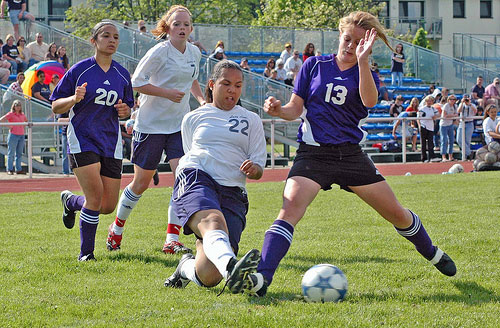Homophobia in female sports does not exclude the female athletes that start to participate in sports at a young age. Their parents' beliefs and society's influence cause homophobia to be present from the start of their athletic careers. It begins with society's belief that lesbians are morally wrong and pose a threat to other individuals, especially young women. Society's perverse beliefs have influenced parents to bring their own fears combined with society's beliefs into their daughter's activities.
Parents, once influenced into thinking that lesbians are predators, seek out sports where males are the ones doing the coaching. Parents do not view the male coach as a sexual predator but rather a more qualified individual in the world of sports who are better suited to instruct their daughters. However, if the coach is a single female, parents' fear that she could be a lesbian out to corrupt their daughter.
In addition to desiring a male coach over a female coach on their daughters' sports teams, parents' also try to influence the type of sports or activities that their daughters participate in. Society has been bold enough to stereotype certain sports as having a higher number of lesbian activity and so parents try to discourage their daughters from participating in "high risk" lesbian sports. Team sports such as softball and basketball, sports considered masculine in nature, are said to promote lesbian tendencies. Parents fear that participation in such sports will influence their daughter to engage in morally wrong behavior and so they encourage activities such as dance, gymnastics, or cheerleading because of their feminine promoting qualities.
When young female athletes enter their middle and high school years, their parents' influence on the type of sports they played continue and they often pursue the same activities or show ways to feminize themselves in more masculine sports. Those that play a "high risk" lesbian sport are encouraged to conduct themselves as femininely possible while participating in the sport and to portray themselves as females. A common belief is that longer hairstyles are more feminine and female athletes are encouraged to maintain such a style. This belief stems from society's views of a genuine female and how to distinguish the difference between a female athlete and a lesbian female athlete. Society says that if a female athlete has a shorter hairstyle they are more likely to be a lesbian rather than thinking that a shorter hairstyle is more manageable for an active individual. Sports uniforms worn specific ways is also used as a way to determine between lesbian female athletes and female athletes. Society believes that if a woman is wearing a kilt or shorts at a mid thigh level during a game she is less likely to be a lesbian. Society also feels that noticing the attire of an athlete before and after a sporting event is a factor in noticing whether the athlete is a lesbian. If an athlete is wearing comfortable dress trousers and button up shirts versus form fitting clothing with jewelry they are more likely to be a lesbian. These beliefs act as guidelines for young women to follow while participating in sports.
Labeling a female athlete a lesbian based on looks is one-way society has found to be a way to distinguish between the two female athletes. However, labeling a female athlete a lesbian as a recruiting tactic based on fear and negative views is a typical practice in the world of female sports at the college level.

